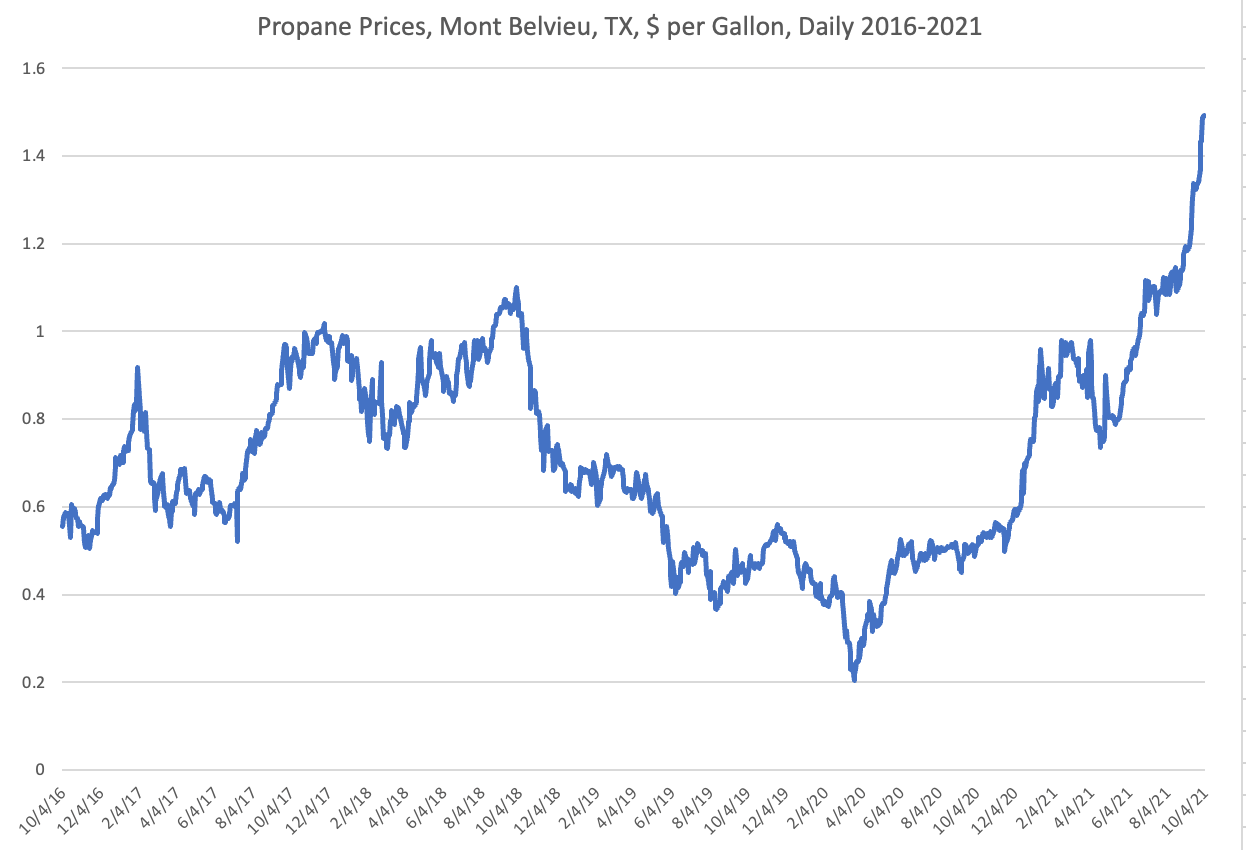Poultry growers across the southeastern broiler belt are watching heating fuel prices closely. Most commercial poultry houses are heated with either liquid propane (LP) and natural gas (NG) and heating costs can account for upwards of 40% of the annual cost of production. Currently, commodity trading prices of LP and NG are at 5-year highs. The reasons for this are multi-faceted but are closely related to a national supply deficit approaching 30 million barrels of LP per the latest U.S. Energy Information Center’s inventory update. Additionally, the NG crisis in Europe and Asia created a driver for prices to move higher as traders buy BTUs across the energy spectrum. Since LP is primarily a byproduct of crude oil & NG production, recent disruptions in offshore oil and the overall decrease in domestic oil production has shortened LP supply. Natural gas price has moved up 2.5x in the past year. This has a major impact on propane prices as natural gas acts as a price floor for propane. These factors, along with higher trucking costs, are indicators that LP prices could continue to rise this winter and reach all-time highs in the short-term. The bottom line for poultry growers is to do all they can now to prepare for significantly higher heating fuel costs this winter. This includes considering available price security options sooner rather than later and doing all the tightening up and insulating of their houses they can manage. It could be a long winter.

Brothers, Dennis. “Commercial Poultry Input Costs Heating Up!” Southern Ag Today 1(43.2). October 19, 2021. Permalink
